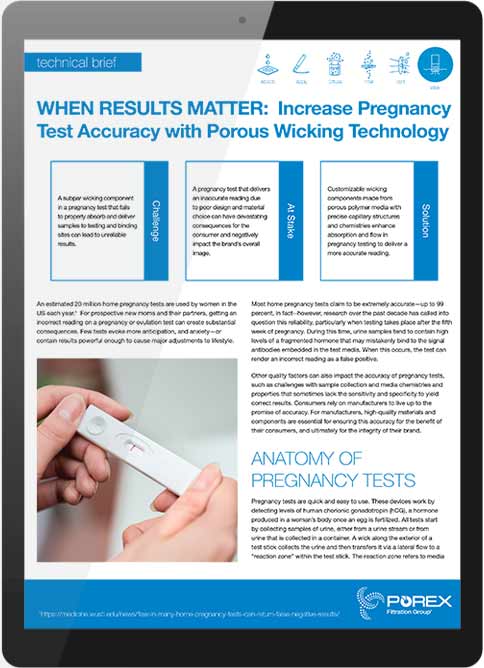Why download the tech brief:
- Understand how challenges with sample collection and media chemistries and properties that lack the proper sensitivity and specificity can impede the accuracy of pregnancy tests.
- Learn why ill-equipped or poorly structured pregnancy test devices often start with a subpar wick that lack the capillary structure for optimal absorption and delivery to the reaction zone.
- Discover how porous polymer media can enhance wicking, absorption, and flow in pregnancy testing to deliver a more precise reading.

Please download the tech brief by filling out this short form:

